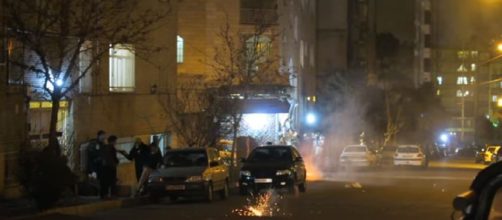Chaharshanbeh Suri is an ancient festival celebrated by millions of Iranians for thousands of years on the evening of the last Tuesday before the start of the Iranian New Year (Nowruz). This year, though, it was more than just a celebration, in light of the call by the Social Headquarters of the main opposition, the People’s Mojahedin Organisation of iran (PMOI/MEK) to turn Chaharshanbeh Souri into another round of anti-regime protests.
From day one, the clerical regime has acted against rich culture and traditions of a centuries old civilization.
There have been many examples. Last October, people were preparing to gather in Pasargadae, near Shiraz, the site of the tomb of Cyrus the Great to celebrate his birthday. Cyrus is known for what is said to be the world’s first charter of human rights.
As with Chaharshanbeh Suri, the regime took every measure to prevent the gathering of Iranians in Pasargadae. The regime issued a number of public warnings to discourage and even frighten the people from going to Pasargadae. The Revolutionary Guards (IRGC) and other security forces were on alert in the region and were ready to crack down on the people.
However, despite all warnings, a large number of people from all over the country took the risk to go to Pasargadae.
The regime closed the main highway and all national roads in the countryside to prevent anyone from reaching the city. As many people tried to reach the city on foot through the mountains, the suppressive forces used helicopters to prevent them from doing so.
Despite the regime closing off the whole city, there was widespread participation and this constituted a humiliating defeat for the regime as a number of gatherings took place on the roads leading to Pasargadae, with people chanting anti-government slogans, including "Death to the principle of Velayat-e-Faqih (supreme religious rule)". A significant aspect of the event was the combination of popular participation and the organized nature of the protest - a fact that was acknowledged by the state-controlled outlets blaming PMOI/MEK for its role in organizing the protest.
Chaharshanbeh Suri was a different kettle of fish, making the regime fearful of a repeat of the uprising which shook it to its core late last December and early in January. As a result, the regime resorted to all kinds of brazen and extreme deterrents and suppressive measures, all across the country.
Regime on full alert
All repressive organs, including the Revolutionary Guard Corps, the Basij, intelligence and police forces, and plainclothes agents, were put on full alert.
In the last hours before Chaharshanbeh Suri, the IRGC Cyber Army wrote on its Telegram channel that in light of the recent call by the PMOI/MEK "to disrupt the security of the country, all the people must pay attention to celebrate this ancient feast in their yards with peace and security, have kebabs together, and must not appear on the streets or allow their children and teens to use explosives and firecrackers or go into the street.”
On one hand, the regime was inviting the people to celebrate Chaharshanbeh Suri by eating kebabs and watching popular movies that were to be broadcast on state television throughout the day.
On the other hand, Basij paramilitary forces were stationed in city centres and in the streets after office hours. Many Basijis, who are always the target of the anger of courageous youth, showed up in firefighters’ uniforms in fear of being punished by the people.
Col. Mehdi Ghadami, a security official, claimed that in just 72 hours, nearly 8 billion types of incendiary materials had been discovered.
Then, there came the Fatwa (religious decree) by Supreme Leader Ali Khamenei. The Iranian government website wrote on Sunday, March 14th that Khamenei, in explaining his views on Chaharshanbeh Suri, said the ceremony "in addition to having no religious basis, involves a lot of harm and corruption and is Haram (unlawful)."
What happened on Chaharshanbeh Suri
But despite all the aforementioned security measures on that evening, what happened on Chaharshanbeh Suri was exactly the harm that Khamenei and his regime were trying to prevent.
In spite of the extensive repressive measures and security forces on full alert, the courageous youth across different cities in Iran turned the celebration of Chaharshanbeh Suri into a scene of protest and expressions of disgust for the religious fascism ruling Iran.
According to reports from Tehran and numerous other cities and towns, photos and banners of Khamenei, Khomeini and Rouhani as well as many repression centres were set ablaze by the youth, and the slogans “Death to Khamenei” and “Death to the Dictator” were chanted all across the country.
According to Kavea, a young protester and one of many supporters of MEK inside Iran who was interviewed by Fox News on the eve of Chaharshanbeh Suri, "The repression of the regime is a dead end,... When you see these numbers of protesters, the message is clear... Iran is a volcano, and it will erupt much sooner than you think."


